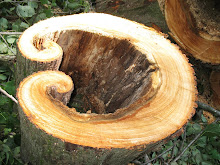Cole Swensen - Goest
Cole Swensen's poetry is not accessible to me. When I read an interview with her I realized why...Swensen works in ekphasic poetry-- poetry that describes visual art, often paintings. She thinks of the poems themselves as visual art and looks at the page as a canvas.
I am at the other spectrum of poetry-- wanting it to be read. Wanting it to be an auditory, musical art form. And visual art, visualization is my weak point.
I wanted to understand what the poem was ABOUT or hear the beauty in the language, not try to picture the visual that she was describing. As a prose person I wanted more narrative.
But while the poems themselves are inscrutable to me, I can still look at the organization that she uses in the manuscript.
Goest is divided into 3 named sections:
1. Of White - Poems that are definitely images.
The Girl who Never Rained
Others
Five Landscapes
The Future of Sculpture
White Cities
2. A History of the Incandescent - Poems with a lot of historical or quasi-historical information, but still largely driven by image and light.
Lacrymae Vitrae
The Invention of the Night-watch
The Invention of Streetlights
The First Lightbulb
The History of Artificial Ice
The Invention of the Hydrometer
The Invention of the Mirror
The Invention of the Weathervane
The Invention of Automata
What the Ventriloquists Said
The Origin of Ombres Chinoises
The Game of Balls and Cups
The Discovery of Bologna Stone
Things to Do with Naphtha
Of Manganese and Other Things
The Lives of Saltpeter
The Invention of Etched, Engraved and Incised Glass
The Expolration of Fluor-Spar
The Invention of the Pencil
The Development of Natural gas
3. On White - More really visual poems. A return and reworking of similar or the same material handled in the first section.
Razed Cities
The Future of White
Five Landscapes
There is something very compelling about this ABA form to the manuscript. Seeing how the thematic material is changed and transformed from the beginning to the end by the intervening section that is quite different.
So here comes the idea of not putting ALL of the thematically similar material together. Where does it belong?


0 Comments:
Post a comment
<< Home